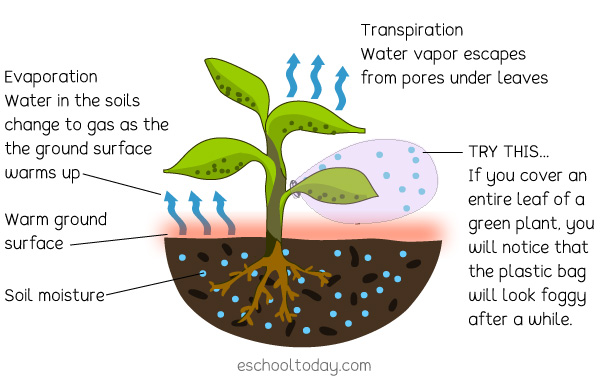- The Water Cycle
Transpiration
Transpiration is the discharge of water vapor from the leaves of plants into the atmosphere. It is a process that the eye cannot see, even though the amounts of moisture involved it significant. It is known that a large oak tree can transpire 40,000 gallons (151,000 liters) per year.

Transpiration is also the reason why there is higher humidity in places with lots of vegetation cover.
During transpiration, water absorbed from the soil by the roots of the plant is carried up into the leaves. There, moisture is discharged through small pores underside of the leaves. The amount of water transpired depends on the plant itself, the moisture in the ground (soil), the surrounding temperature, and the wind movement around the plant.
Transpiration can occur together with evaporation. When this happens, we call it evapotranspiration.
Evapotranspiration accounts for about 10% of vapor in the atmosphere.
